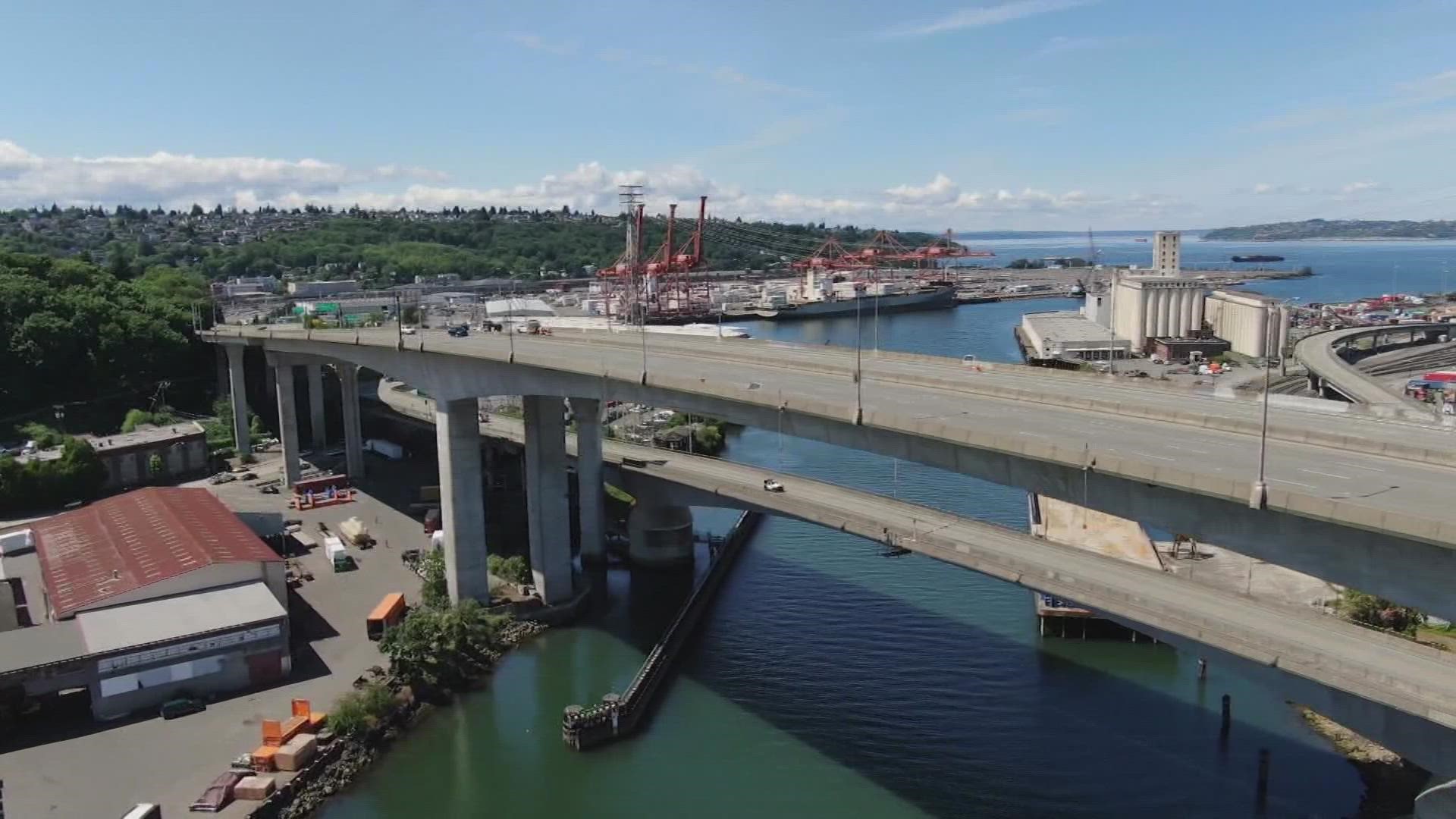SEATTLE — On Monday, the West Seattle Bridge (WSB) is entering its final phase of repairs after being closed for more than a year and a half.
Mayor Jenny Durkan and the Seattle Department of Transportation (SDOT) Director Sam Zimbabwe announced the milestone with a number of other officials.
Zimbabwe said that the substantial completion date for the repairs is projected to be June 30, adding that there will be no more than two weeks of testing following this date, making the projected full reopening date July 14.
Supply chain issues along with other uncertainties like weather and construction interruptions could lead to delays.
"This has been a really challenging 22 months for the city of Seattle," Durkan said, saying that the bridge is "not just a connection between communities, it’s one of the most important economic bridges we have in our region and in the western United States."
Repairs for the WSB were split into essentially three phases, the first of which included stabilizing the bridge by installing new cables and anchors that would help keep the bridge from deteriorating further.
The second phase, which began last year, involved planning and designing the repair project while choosing a contractor up to the task.
The final phase, which will last through mid-2022 when the bridge is expected to reopen, includes the bulk of construction for repairs and essentially entail a greater amount of work similar to what was done during the stabilization phase.
"Work crews are returning to the hi-rise. We are on track to reopen that bridge mid-year next year." Durkan said. "We are on time and on budget."
The contractor, Kraemer North America, will install more carbon fiber wrapping around the bridge and post-tensioning cables to strengthen its structure as well as fortifying work on the side spans on east and west sections of the structure.
The repairs will cost roughly $47 million, with an additional $50 million in traffic mitigation and $10 million in lower bridge repairs.
Normally carrying about 100,000 vehicles per day, the WSB was closed in March 2020 when engineers found cracks in its structure had grown significantly in a matter of weeks.
The repairs are expected to last until around 2060, at which point the bridge will likely need to be completely replaced.
SDOT has already released its plans for this anticipated replacement, which it hopes to have finished in time for the eventual demise of the current WSB.
Earlier this month, SDOT said it found two options for a replacement were the “best performing,” which were the “On-Line” and “Hybrid” concepts.
The “On-Line” concept involves building the replacement bridge along the same corridor as the current WSB.
The “Hybrid” concept would build two bridges: one along the same corridor as the current WSB and another to the north.
Every option that was studied would require lane closures on WSB during construction, but the “Hybrid” and “On-Line” concepts were found to be the best in maintaining travel and meeting SDOT’s objectives.
SDOT plans to finalize its findings and report on the replacement bridge later this year. Once the repaired WSB nears the end of its life, SDOT plans to revisit its report and begin planning for construction.
“Repairing the West Seattle Bridge and the lower Spokane Street Bridge will help relieve the bottlenecks in our supply chain, protect the $350 million investment in modernizing Terminal 5, and ensure that freight can be moved efficiently to it and the other port terminals that support over 45,000 jobs,” said Senator Cantwell in a written statement.
The lower Spokane Street Bridge, one of the few alternatives to cross the Duwamish River while the WSB is closed, had to shut down Monday morning due to mechanical issues. It has since reopened but is closing intermittently for boat traffic.
This primarily affects freight traffic since the bridge is closed to regular traffic for most of the day.


